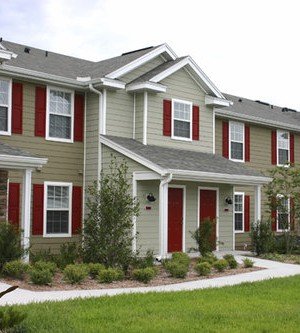- 4 Unexpected Things I’ve Learned From Buying My First Mobile Home Park
- How Ironic: America’s Rent-Controlled Cities Are Its Least Affordable
- U.S. homes are still a bargain on the international market
- Getting The Best Possible Quality Photos On MLSs and Syndicated Sites
- Home buyers in these markets have the upper hand
Don’t Rehab a House Until You Read This

Those real estate investors that can hit the ground running often have the advantage. If you can start repairs and improvements on closing day, you should be able to rent or resell faster. Unfortunately, many new property investors keep making big rehabbing mistakes. Making poor rehabbing choices is never worth reducing the amount of time you spend on a property. So what blunders do investors need to make sure they are avoiding?
The Big Value Question
The biggest mistake new investors are making today is not adding real value. Few new real estate investors really understand what makes a property valuable, or not. Even fewer understand which improvements and features make a difference. You could technically put $7M of upgrades into a $1M home, and not add $1 to the resale value of the property!
5 essential considerations for all investors:
1. How is ‘value’ really determined?
2. Understanding the difference between appeal and value
3. Determining the most profitable home upgrades and changes
4. Understanding end buyers and renters
5. Accurately calculating net ROI on home repairs and improvements
Understanding Property Values
There are volumes of articles on which home improvements can help add value, or help a home sell faster. The majority of them are seriously flawed. The alternative approach is the most common form of property valuation. This is one which most individuals understand the basics of. However, it also trips up many investors. A lot don’t understand the underlying factors which can push up, or bring down values. This home valuation method basically determines a value based upon the price of other similar homes. If an identical home on the lot next door sold for $300,000; yours should be worth $300,000 too.
There are many finer elements and quirks to this methodology. Views, lot position, age, and big features like swimming pools can all make a difference. The most important factors for value are generally the number of bedrooms and the size of the property. Typically the larger it is, and the more bedrooms it has, the more it is worth. That is providing it still has comparables in the neighborhood. For example; there is no use in putting 6 bedrooms into a home when all the surrounding properties only have 3.
In many areas, the underlying land makes up most of a property’s value. Consider that if the property is worth almost as much as a vacant lot, improvements aren’t going to add much value. In some cases, tearing down and clearing a property may be considered the best improvement. But this is highly controversial.
Real estate investors must consider the ‘highest and best use’ of each property. If a home sits in the path of major development, it may be better off being re-purposed. It could be desirable for a commercial real estate developer who can put many condos or stores on the property.
Finally, consider how end buyers are now valuing properties. For example; rental homes are now being value based upon their income and cap rates, not comparable sales values.
It’s complicated. Many real estate agents don’t even understand what truly impacts property value. The more real estate investors can learn about values, the better. The more you know the better deals you will make, the more profitable your efforts will be. Improve knowledge in this area by talking to licensed appraisers and mortgage experts, and by taking appraiser and real estate investing courses.
Cosmetic Appeal vs. Appraised Value
The biggest issue is understanding cosmetic appeal versus appraised value. Few home improvements add tangible value to an appraisal. If buyers are paying cash, and are willing to pay over market value, this may not be an issue. However, if buyers will be using financing, they will be limited by the appraised value of a property.
Items like landscaping, flooring, appliances, painting, and staging offer no boost to appraised value. This means upgrading kitchens and bathrooms can often lose money. Cosmetic home improvements can be useful. If they increase appeal, attract more bids, and help a home sell faster, it can be worth it. But do the math carefully.
Understanding Your End Customer
Finding the right balance in rehabbing is all about understanding your end buyer or renter.
Will you be renting or reselling the property? The extent of repairs and improvements will depend a lot on this answer. It also matters whether the end buyer will live in the property or rent it out. Do they care more about having a beautiful place to live or value? Are you able to improve it to their tastes? Or will they gut it and remodel themselves anyway? There may be little profit in renovating some high end luxury homes. Many of these buyers will invariably gut renovate once they take over. In contrast; some mid and lower end buyers may prefer to finance a finished home, than have to find the cash to do it. Style is a factor here. For example; paying to replace siding when no buyers want to live in a home with siding panels. It may be better to leave them as is. Or to change the exterior.
Another factor which trips up many new investors is calculating the true ROI on improvements. Cost versus added value is just one part of the equation. Materials and labor are just one part of the real cost of improvements. Holding costs are a big factor. For example; putting in a pool might add $30,000 in value. But if it costs $20,000, and requires holding a property for another 3 months, it may not be net profitable at all. What about the cost of financing improvements? Are you paying interest on that money? Are you missing other buying opportunities? Would wholesaling some houses as is actually be more profitable than fixing and flipping them?




 100% Secure
100% Secure
You must be logged in to post a comment Login